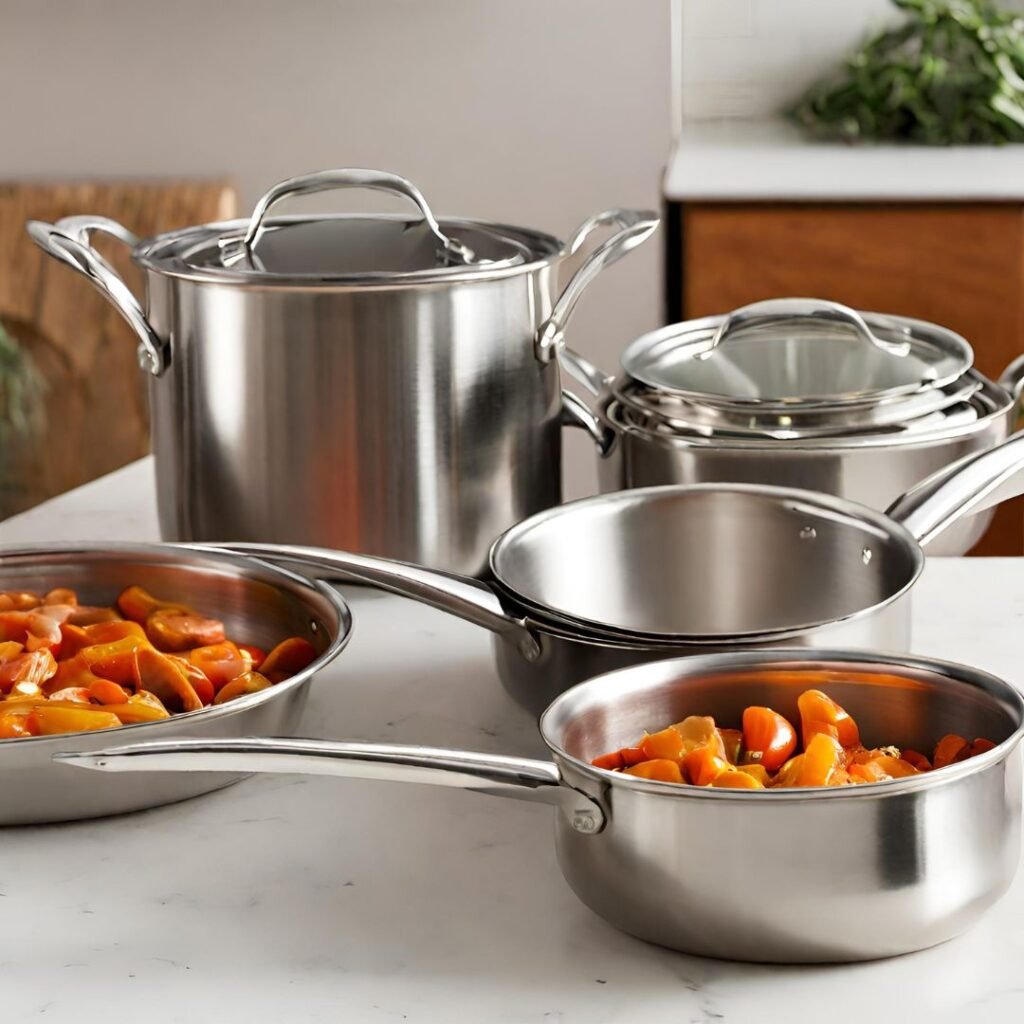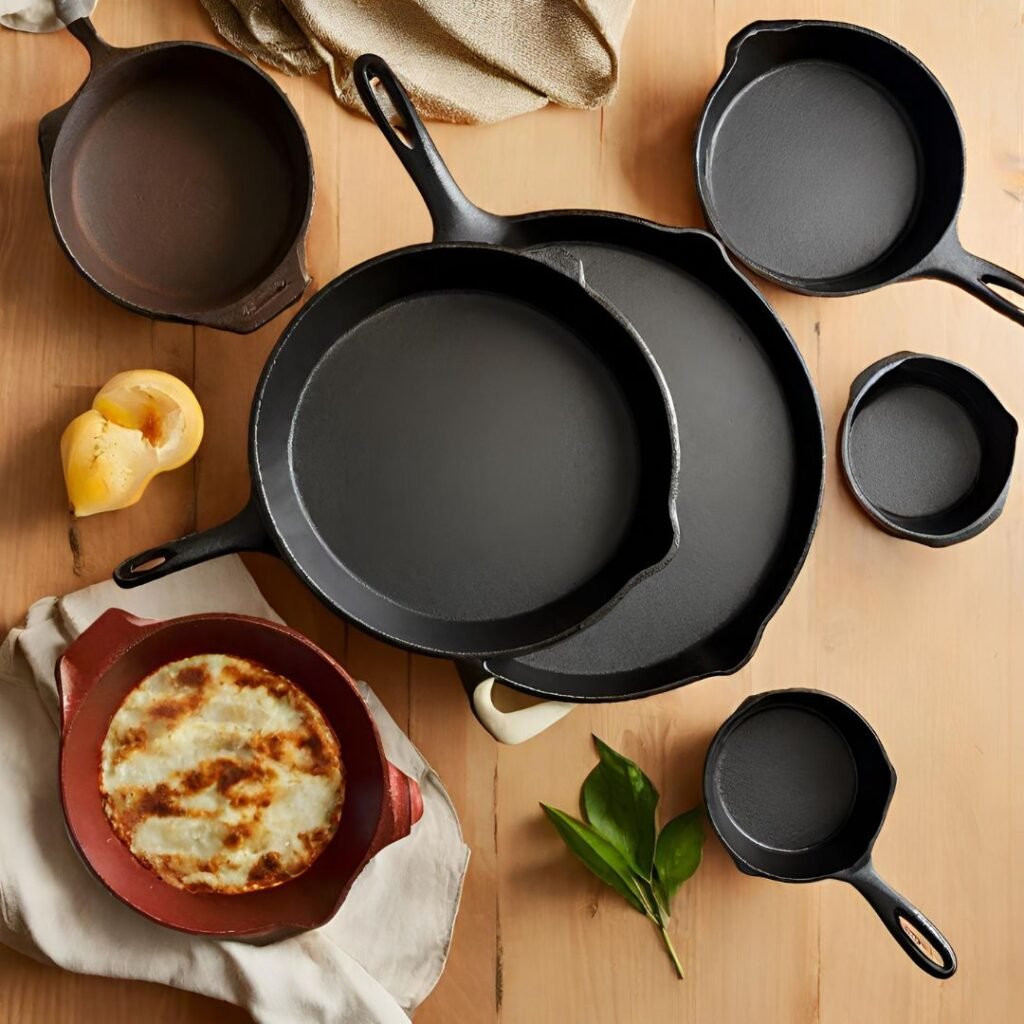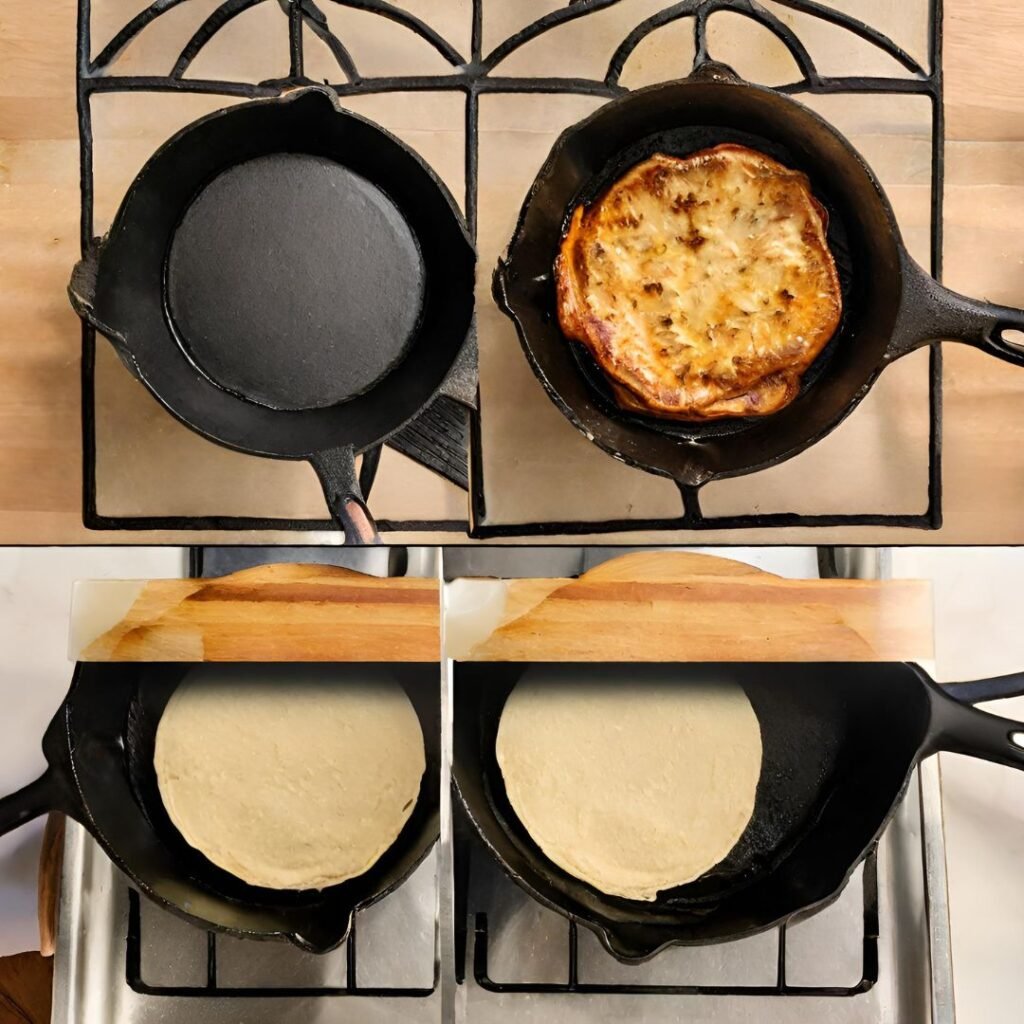Table of Contents
I. Introduction
In the realm of cookware, two materials stand out as enduring favorites: stainless steel and cast iron. Each has its own unique set of properties, advantages, and applications, making the choice between them a matter of personal preference, cooking style, and culinary needs.
II. Overview of Stainless Steel Cookware

Stainless steel cookware, with its gleaming appearance and modern aesthetic, has become a staple in many kitchens. Comprised of an alloy of iron, chromium, and nickel, stainless steel offers a combination of durability, versatility, and ease of maintenance.
Advantages of Stainless Steel Cookware:
- Heat Conductivity: Stainless steel conducts heat evenly, allowing for precise temperature control and preventing hotspots.
- Non-stick Properties: With proper seasoning, stainless steel can achieve a non-stick surface, reducing the need for added fats and oils.
- Durability: Stainless steel is resistant to scratches, dents, and rust, making it a long-lasting investment.
Common Uses of Stainless Steel Cookware:
- Searing meats and vegetables
- Simmering sauces and soups
- Boiling water and pasta
- Baking cakes and pastries
III. Overview of Cast Iron Cookware

Cast iron cookware, with its rustic charm and legendary durability, has graced kitchens for centuries. Crafted from molten iron poured into molds, cast iron possesses exceptional heat retention and a unique non-stick surface.
Advantages of Cast Iron Cookware:
- Heat Retention: Cast iron excels at retaining heat evenly, ensuring consistent cooking and promoting browning and caramelization.
- Natural Non-stick Properties: When properly seasoned, cast iron develops a natural non-stick surface, eliminating the need for chemical coatings.
- Versatility: Cast iron can handle a wide range of cooking methods, from searing meats to baking bread to shallow frying.
Common Uses of Cast Iron Cookware:
- Searing steaks and chops
- Baking cornbread and crusty bread
- Shallow frying chicken and fish
- Cooking hearty stews and braises
IV. Heat Conductivity and Distribution
Both stainless steel and cast iron offer distinct heat conduction properties that influence their cooking performance.
Stainless Steel: Stainless steel conducts heat well, allowing for rapid temperature changes and even heat distribution across the cooking surface. This makes it suitable for cooking methods that require precise temperature control.
Cast Iron: Cast iron, while not as conductive as stainless steel, excels at retaining heat evenly. This slow and even heat distribution promotes browning and caramelization, making it ideal for searing meats and baking dishes.
Pros and Cons:
Stainless Steel:
- Pros: Rapid heat conduction, even heat distribution, precise temperature control
- Cons: Not as heat-retentive as cast iron, may require more oil for non-stick cooking
Cast Iron:
- Pros: Exceptional heat retention, even heat distribution, natural non-stick surface
- Cons: Slow heat conduction, may require more seasoning and maintenance
V. Durability and Longevity
Both stainless steel and cast iron are known for their durability and ability to withstand the rigors of everyday cooking. However, there are some key differences in their overall lifespan and maintenance requirements.
Stainless Steel: Stainless steel is exceptionally durable and resistant to scratches, dents, and corrosion. With proper care, stainless steel cookware can last for decades, making it a cost-effective and sustainable choice.
Cast Iron: Cast iron is also renowned for its durability and longevity. Properly seasoned cast iron can last for generations, passing down culinary traditions through families. However, cast iron requires regular maintenance to prevent rust and maintain its non-stick properties.
Maintenance Tips:
Stainless Steel:
- Handwash with warm, soapy water and a soft sponge
- Dry thoroughly after each use to prevent water spots
- Avoid using abrasive scouring pads or harsh detergents
Cast Iron:
- Handwash with warm water and a non-abrasive sponge or brush
- Dry thoroughly after each use to prevent rust
- Reapply seasoning regularly to maintain the non-stick surface
VI. Cooking Performance and Versatility

Both stainless steel and cast iron offer a range of cooking capabilities, each with its own strengths and limitations.
Stainless Steel: Stainless steel is incredibly versatile, capable of handling a wide variety of cooking techniques. It excels at searing meats, sautéing vegetables, simmering sauces, and boiling water. Its non-stick properties make it suitable for cooking delicate foods like eggs and fish.
Cast Iron: Cast iron is best suited for cooking methods that benefit from even heat distribution and slow cooking. It excels at searing meats, baking bread, shallow frying, and slow-cooking stews and braises. Its natural non-stick surface improves with age, making it ideal for seasoned cooks.
Examples of Dishes:
Stainless Steel:
- Pan-seared salmon
- Sautéed vegetables
- Creamy tomato pasta sauce
- Perfectly boiled rice
Cast Iron:
- Crispy-skinned roasted chicken
- Crusty artisan bread
- Skillet-fried chicken
- Hearty beef stew
VII. Non-stick Properties
Both stainless steel and cast iron can achieve a non-stick surface, but the process and effectiveness differ.
Stainless Steel: New stainless steel cookware may require some initial seasoning to develop a non-stick surface. Proper seasoning involves cooking a thin layer of oil onto the surface at a high temperature.
Cast Iron: Cast iron’s non-stick properties develop over time through a process called seasoning. This involves repeated use and careful maintenance, including applying a thin layer of oil after each use.
Tips for Maintaining Non-stick Properties:
Stainless Steel:
- Use moderate heat to prevent food from sticking
- Avoid using metal utensils that can scratch the surface
- Clean thoroughly after each use to prevent food buildup
Cast Iron:
- Maintain a consistent seasoning layer
- Avoid cooking acidic foods for extended periods
- Handwash gently with warm water and a non-abrasive sponge
VIII. Maintenance and Care
Both stainless steel and cast iron require regular maintenance to preserve their condition and maximize their lifespan.
Stainless Steel:
- Handwash with warm, soapy water and a soft sponge
- Dry thoroughly after each use to prevent water spots
- Polish occasionally with a stainless steel cleaner to maintain shine
Cast Iron:
- Handwash with warm water and a non-abrasive sponge or brush
- Dry thoroughly after each use to prevent rust
- Reapply seasoning regularly to maintain the non-stick surface
- Store in a dry, well-ventilated area to prevent rust
In summary, stainless steel offers fast, responsive heat conduction, while cast iron excels in heat retention and natural non-stick properties. The choice between the two depends on individual cooking preferences and the desired culinary outcome.
Conclusion
The choice between stainless steel and cast iron cookware ultimately depends on individual preferences, cooking styles, and culinary needs. Stainless steel offers versatility, ease of maintenance, and rapid heat conduction, while cast iron excels in heat retention, natural non-stick properties, and rustic charm. Both materials can be valuable additions to any kitchen, providing years of culinary enjoyment with proper care and attention.
